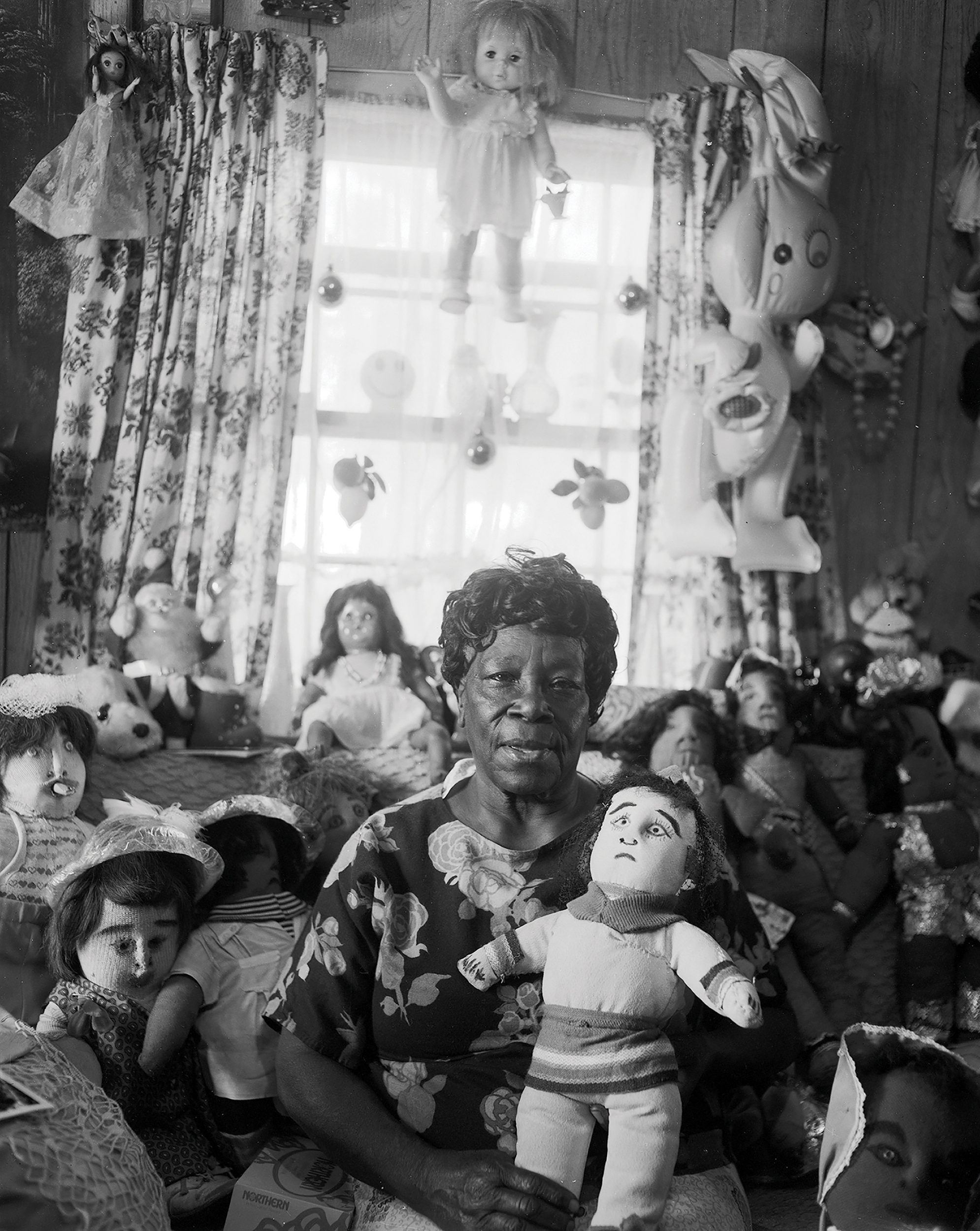At the Peak of Her Career
J. Weiland (American, born 1948), Nellie Mae Rowe, ca. 1977, chromogenic print, 7 1/2 × 9 1/2 inches, courtesy of the artist. © J. Weiland Photography. All rights reserved.
By Katherine Jentleson
In 1976, Rowe’s drawings were exhibited in Missing Pieces: Georgia Folk Art, 1770–1976, a bicentennial exhibition at the Atlanta Historical Society that traveled around the state and was reprised in Washington, DC, during the Smithsonian Institution’s 1978 Folk Life Festival. Also in 1978, Rowe began working with gallerist Judith Alexander, who gave Rowe her first solo exhibition in Atlanta and worked quickly to debut Rowe’s work in New York City at the Parsons-Dreyfuss Gallery the following year. Rowe took her first ride on an airplane to see that show and experience the city, where she was moved by visits to the Statue of Liberty and Harlem.
With increased access to art supplies and unprecedented income from her work, Rowe produced dozens of her most spectacular drawings during the final years of her life. This artistic efflorescence occurred despite the physical pain she suffered, which she learned in November 1981 was due to multiple myeloma and which would take her life almost exactly one year later.
When Rowe died in 1982, Atlanta art critic Cathy Fox noted in her obituary that she was “at the peak of her career.” For in that year, she was included in the Corcoran Gallery of Art’s landmark exhibition Black Folk Art in America, 1930–1980. Four of the works in this section were part of that groundbreaking exhibition, which brought Rowe national renown, fulfilling her wish that her art would survive her as the ultimate marker of her legacy: “All my dolls, chewing gum sculptures, everything will be something to remember Nellie,” she told Alexander before her death. “If you will remember me I will be glad and happy to know that people have something to remember me by when I’m gone to rest.”
Citation
Jentleson, Katherine. Really Free: The Radical Art of Nellie Mae Rowe, wall text. High Museum of Art, Atlanta, September 3 2021–January 9, 2022. https://link.rowe.high.org/essay/at-the-peak-of-her-career/.
“If you will remember me I will be glad and happy to know that people have something to remember me by when I’m gone to rest.”
-
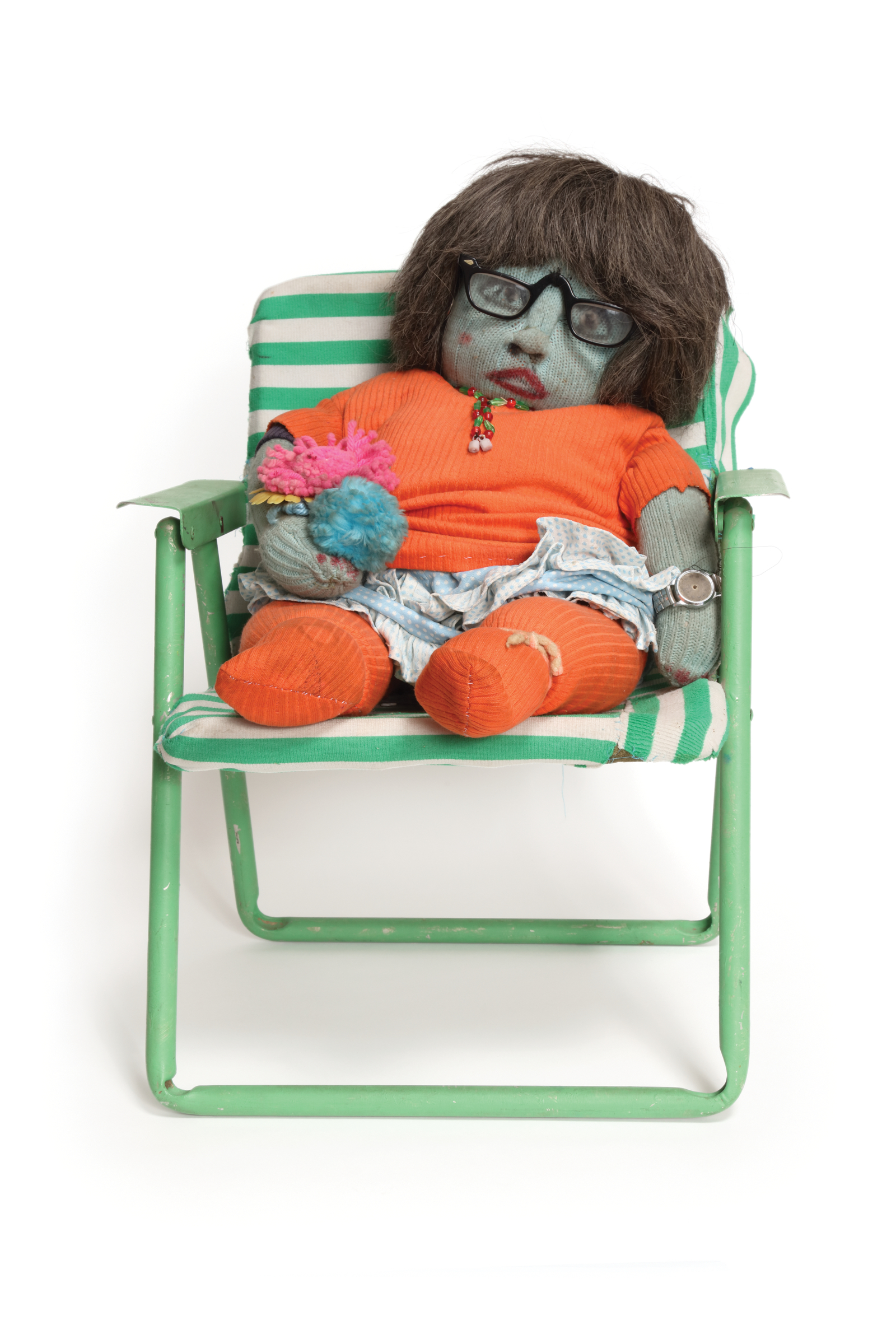
Rowe made her first dolls before she was ten years old out of her family’s clothing, and when she revived the practice as an adult, she again recycled material such as old stockings for their bodies and available fabric for their garments. These two examples, which portray her youthful self and her art gallerist Judith Alexander, show how she detailed them with wigs, necklaces, glasses, and other accessories. She called her dolls her “children,” and they proved to be powerful messengers of her legacy. It was reportedly a doll that was included in a 1978 Nexus artists’ cooperative exhibition that led Alexander to give Rowe her first solo exhibition.
Untitled (Self-Portrait as a Little Girl Doll)
Nellie Mae Rowe, American, 1900–1982
1978–1982
Cloth, fiber stuffing, glass, plastic, paint, yarn, wig, metal, and folding chair
24 x 26 x 26 inches
Norfolk Southern Collection of Self-Taught Art
1996.154 -
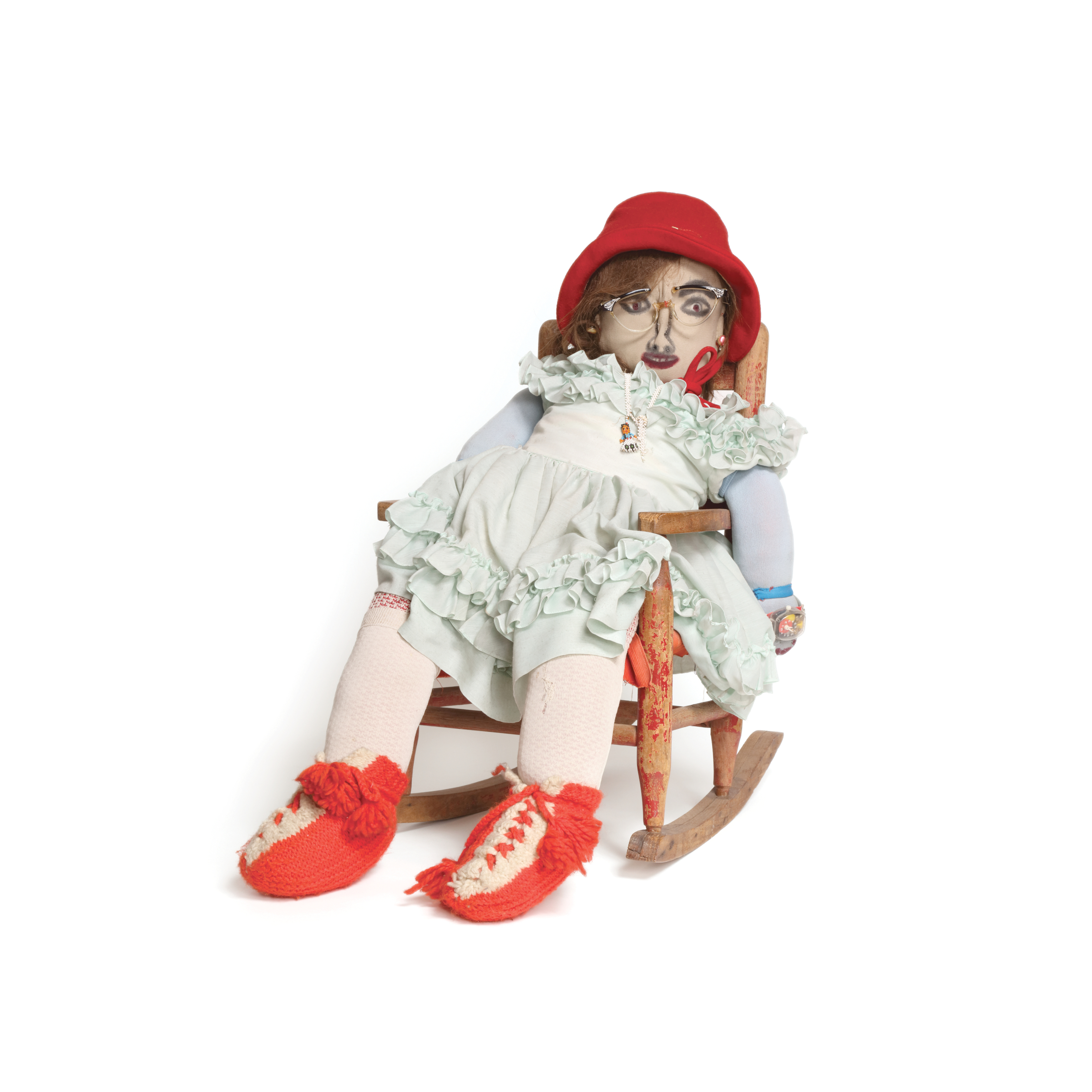
Untitled (Judith Alexander Doll)
Nellie Mae Rowe, American, 1900–1982
1978–1982
Cloth, fiber stuffing, glass, plastic, mother of pearl, wire, wig, pigment, and wood rocking chair
Support/Overall: 30" Tall x 18" Wide x 28" Long inches, (76.2 cm x 45.7 cm x 71.1 cm,)
Gift of Judith Alexander
2001.6 a-b -
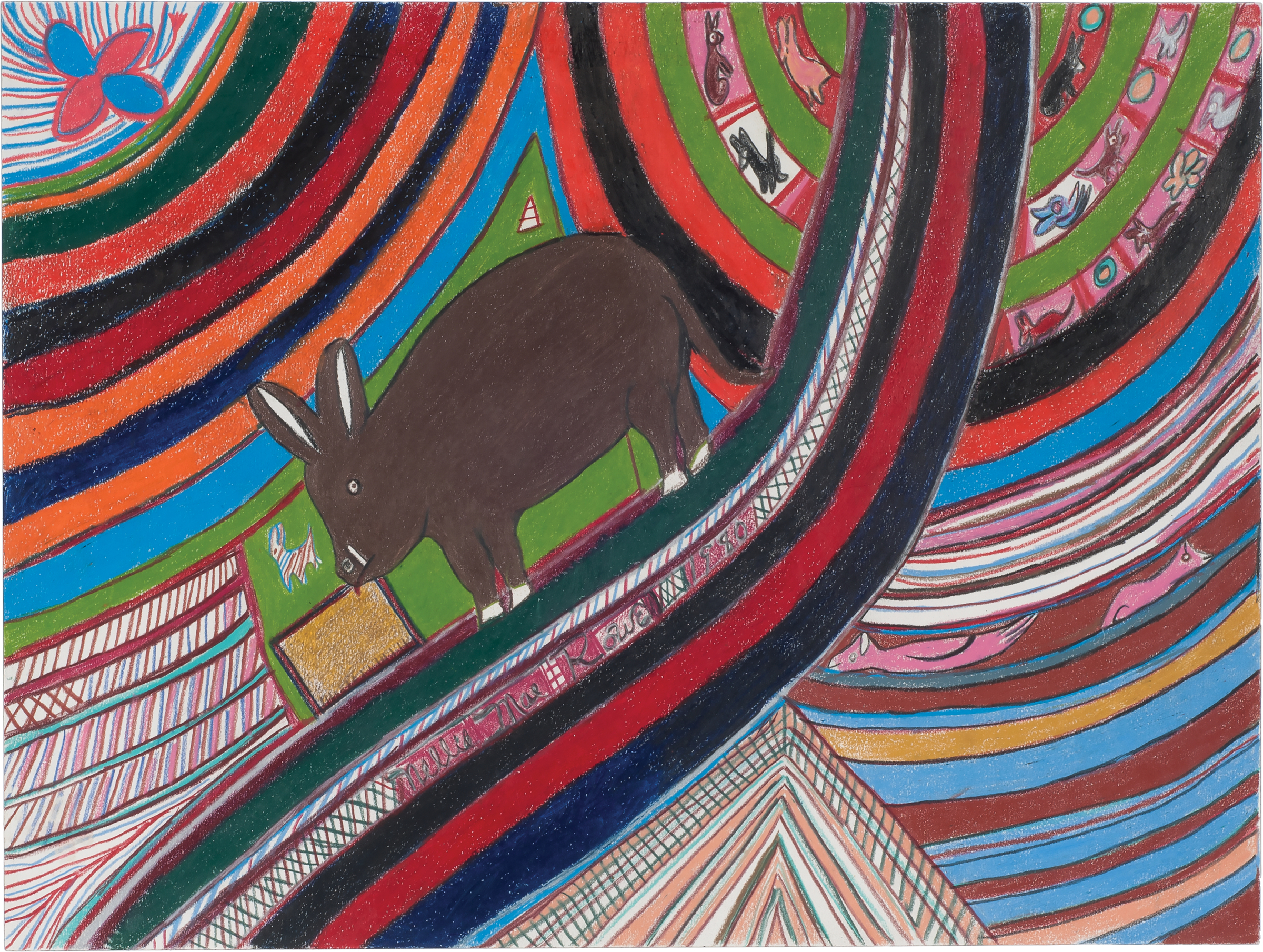
In a colorful palette that eerily predicts the Google Maps display of Atlanta’s daily rainbow gridlock, a brown pig appears overwhelmed and immobilized by the sweeping curves of major roadways. Rowe’s interest in depicting busy roadways like this one underscores the upheaval that increasingly enfolded her community after the completion of I-285 in 1969. She nearly buries her social commentary in her bright colors and sweet pig character, but the work nonetheless offers a critique of gentrification that would disproportionately affect the Black population of Vinings, especially in the years following her death.
Untitled (Pig on Expressway)
Nellie Mae Rowe, American, 1900–1982
1980
Crayon and colored pencil on paper
17 3/4 x 23 3/4 inches
Gift of Judith Alexander
2003.227 -
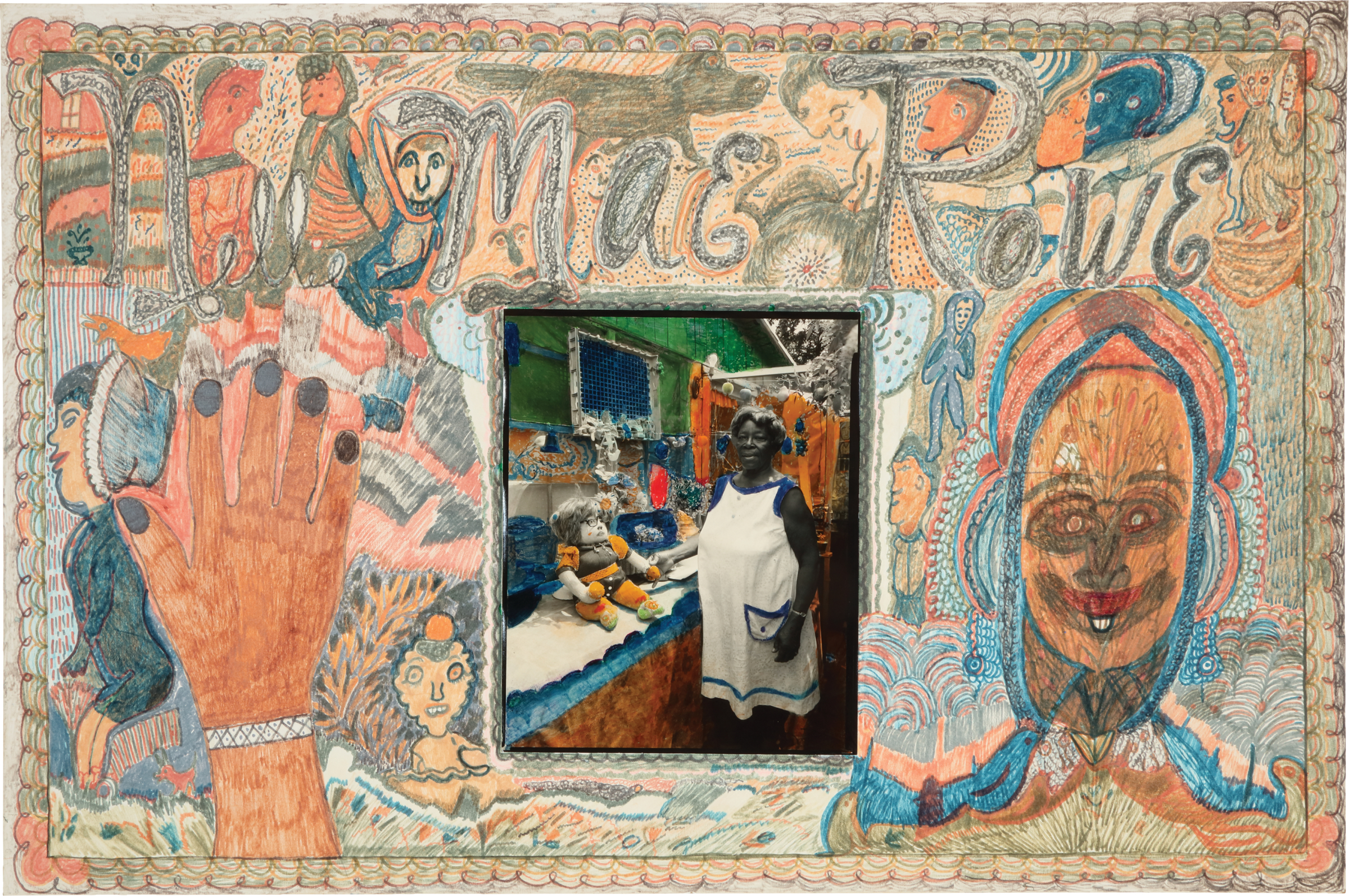
Rowe was rarely open about political meaning in her work, but she described this piece as a tribute to voting, a right that would not be guaranteed to her until 1965. The vignettes that surround the work’s central hand-colored photograph include a figure of Coretta Scott King to the left of Rowe’s outstretched praise hand and voters lined up behind her signature, bowing their heads and shedding tears. To the right is the head of a politician whose dubious grin reveals Rowe’s distrust of elected officials and her ambivalence about voting, especially given the threat of voter suppression and retaliatory violence she faced.
Untitled (Voting)
Nellie Mae Rowe, American, 1900–1982
before 1978
Color photograph, crayon, pencil, pen, and colored pencil on cardboard
20 x 30 1/8 inches
Promised gift of Lucinda W. Bunnen
PA.FOL.NMR9 -
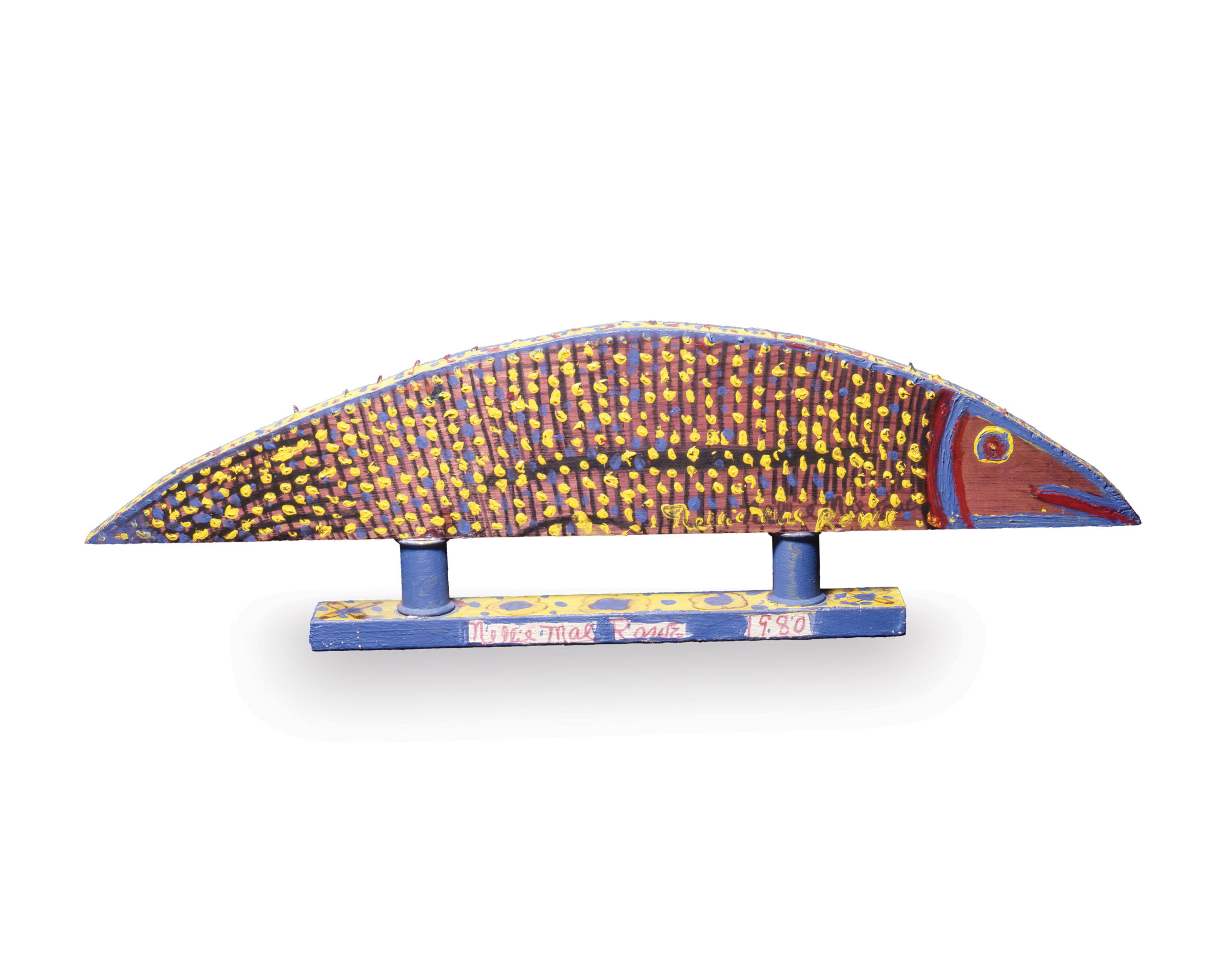
Untitled (Fish on Spools) and Untitled (Feeding the Two-Headed Rooster) were among the twenty-five works by Nellie Mae Rowe the Corcoran Gallery of Art included in its 1982 exhibition Black Folk Art in America, 1930–1980. Rowe was one of only three women represented in this exhibition, which was the first to survey the extraordinary contributions of African American self-taught artists, especially those living in the South. Rowe lived just long enough to know about the sensation that Black Folk Art caused as it traveled to six major American cities.
Untitled (Fish on Spools)
Nellie Mae Rowe, American, 1900–1982
1980
Wood, plastic, and acrylic paint
7 1/2 x 25 x 1 1/2 inches
Purchase with funds from the Georgia Designer Craftsmen
1983.20 -
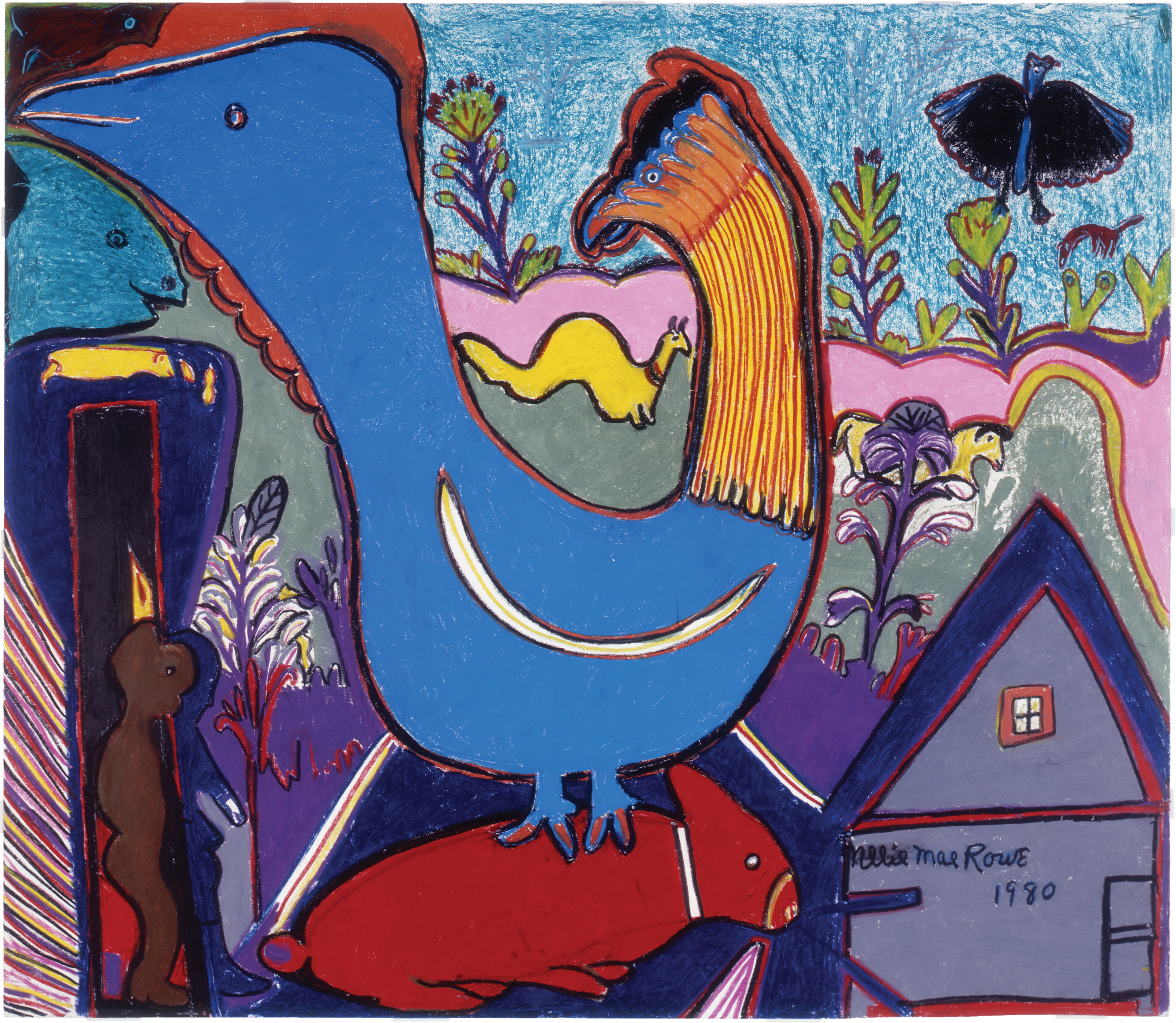
Untitled (Feeding the Two-Headed Rooster)
Nellie Mae Rowe, American, 1900–1982
1980
Crayon and marker on paper
24 1/2 x 29 inches
Gift of Judith Alexander
2003.137 -
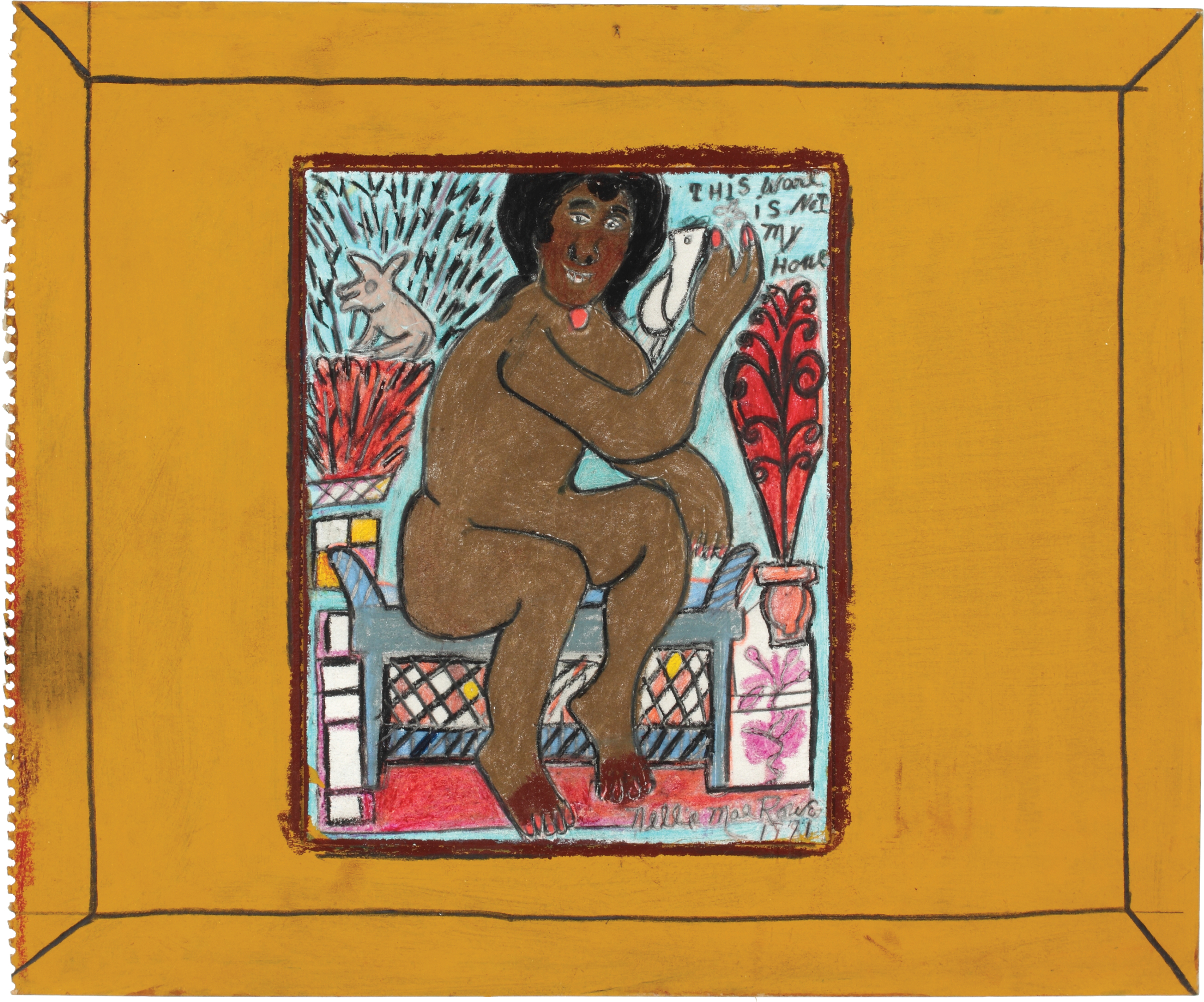
Rowe approached the end of her life with spiritually inspired optimism. “I feel like I’m growing stronger because I’m serving the Lord, and I thank Him for everything. Letting me stay here this long, living down here on love and land, for this world is not my home. My home is on high and I’m going to reach it one day,” she said. She began to visualize this heavenly future especially in works from her final year of life in which she said goodbye quite explicitly.
This Worl is Not My Home
Nellie Mae Rowe, American, 1900–1982
1979
Crayon, marker, colored pencil, and pencil on paper
16 3/4 x 19 5/8 inches
Gift of Judith Alexander
2003.167 -
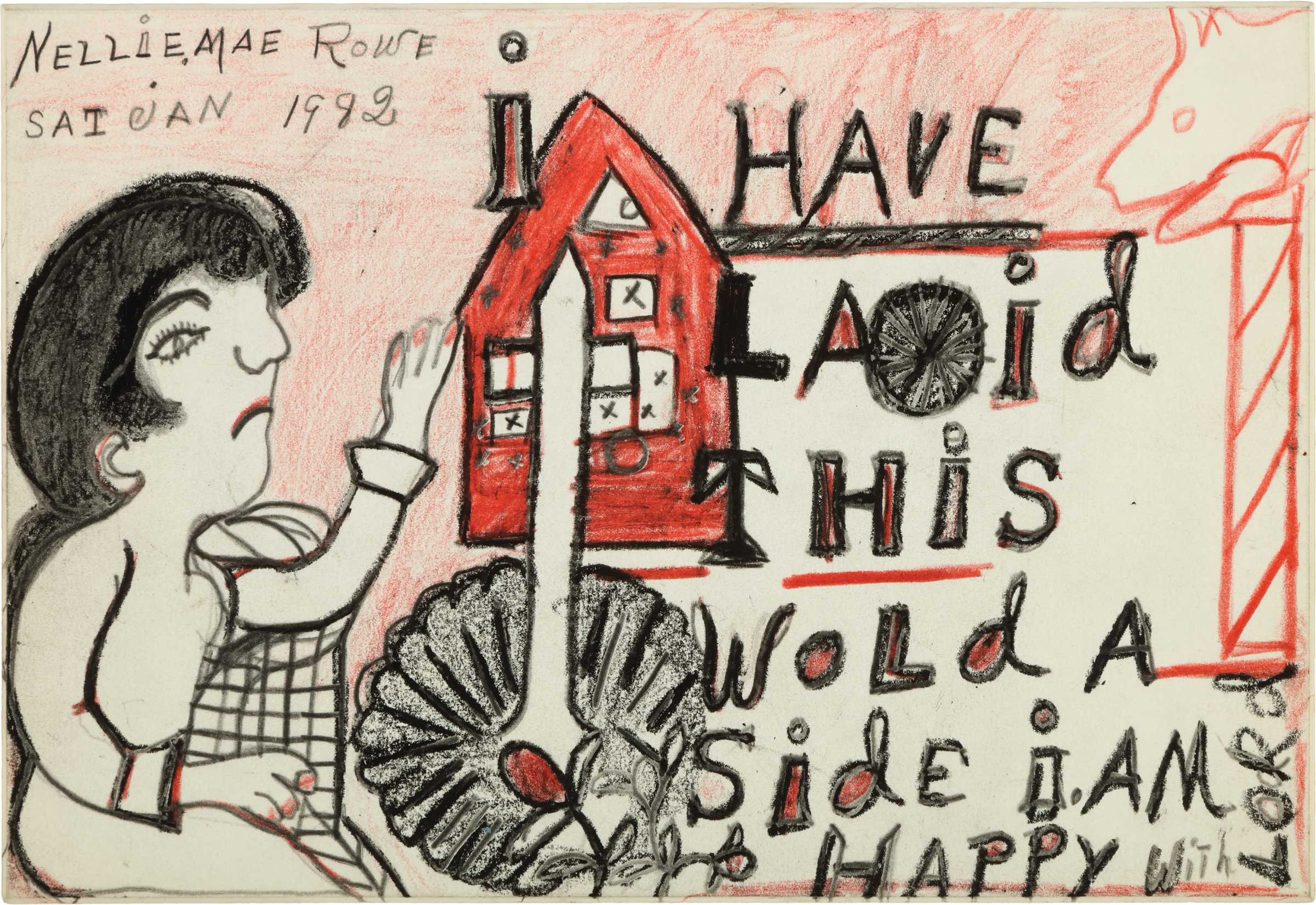
i Have Laid This Wold A Side i Am Happy with Lord
Nellie Mae Rowe, American, 1900–1982
1982
Crayon, colored pencil, and pencil on paper
7 x 10 inches
Gift of Judith Alexander
2003.179 -
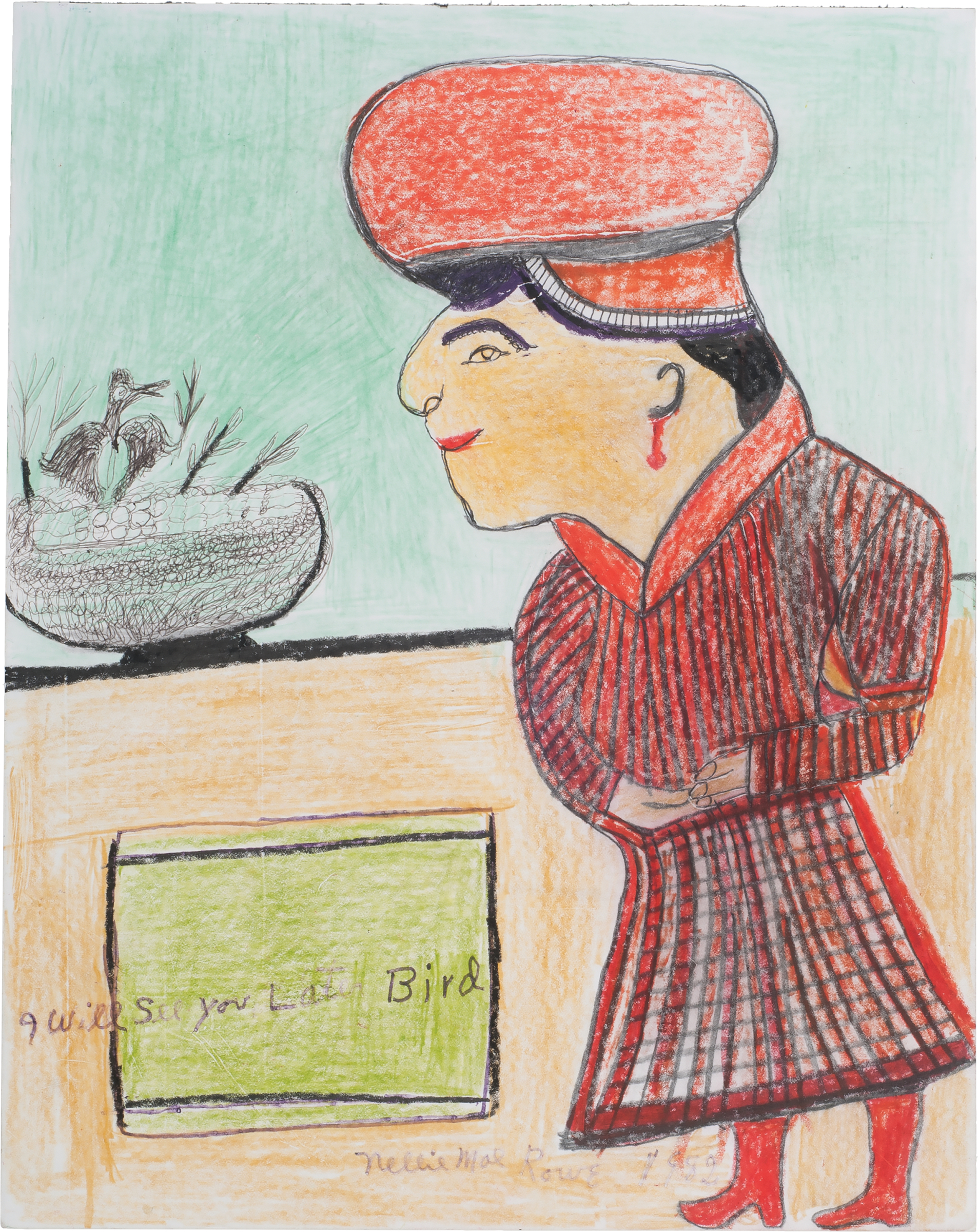
I Will See You Later Bird
Nellie Mae Rowe, American, 1900–1982
1982
Crayon, marker, colored pencil, and pen on paper
13 5/8 x 10 7/8 inches
Gift of Judith Alexander
2003.228 -
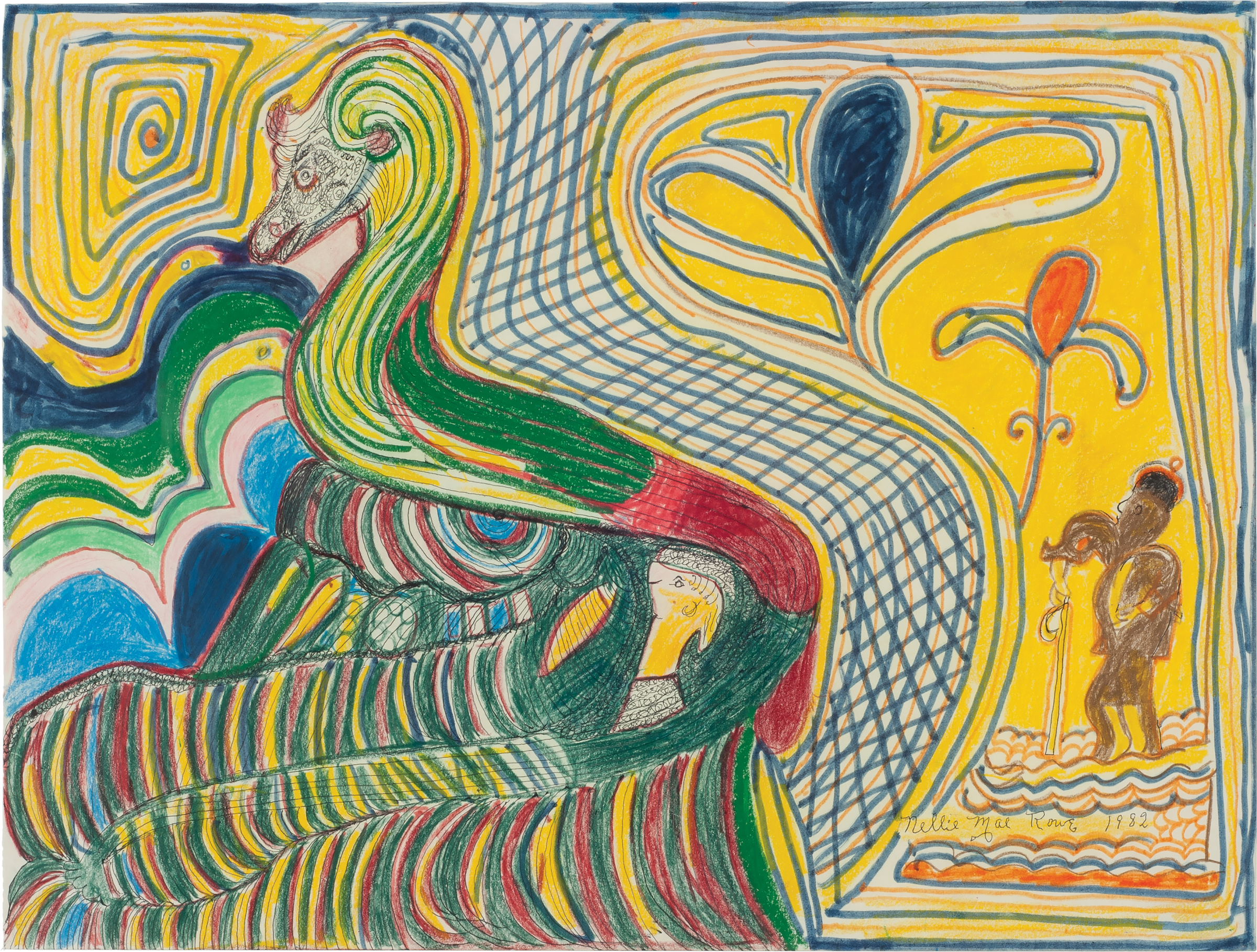
Said to have been her last, this work was inspired by the gospel anthem popularized by Mahalia Jackson, “How I Got Over.” Rowe’s strong yellow invokes “the streets of gold” that line “the homeland of the soul,” described in the song. Along with reds and greens, the yellow also recalls the colors of the Pan-African flag. Rowe’s central serpentine creature wears the double crown of ancient Egyptian kings, locating her scene within the Book of Exodus, which was often used in African American religion and visual art to frame their modern struggle for freedom. She casts Moses as a brown man parting the crosshatched Red Sea to finally reach the Promised Land.
Untitled (Look Back in Wonder at How I Got Over)
Nellie Mae Rowe, American, 1900–1982
1982
Crayon, marker, pen, and colored pencil on paper
18 x 23 1/2 inches
Gift of Judith Alexander
2003.231 -
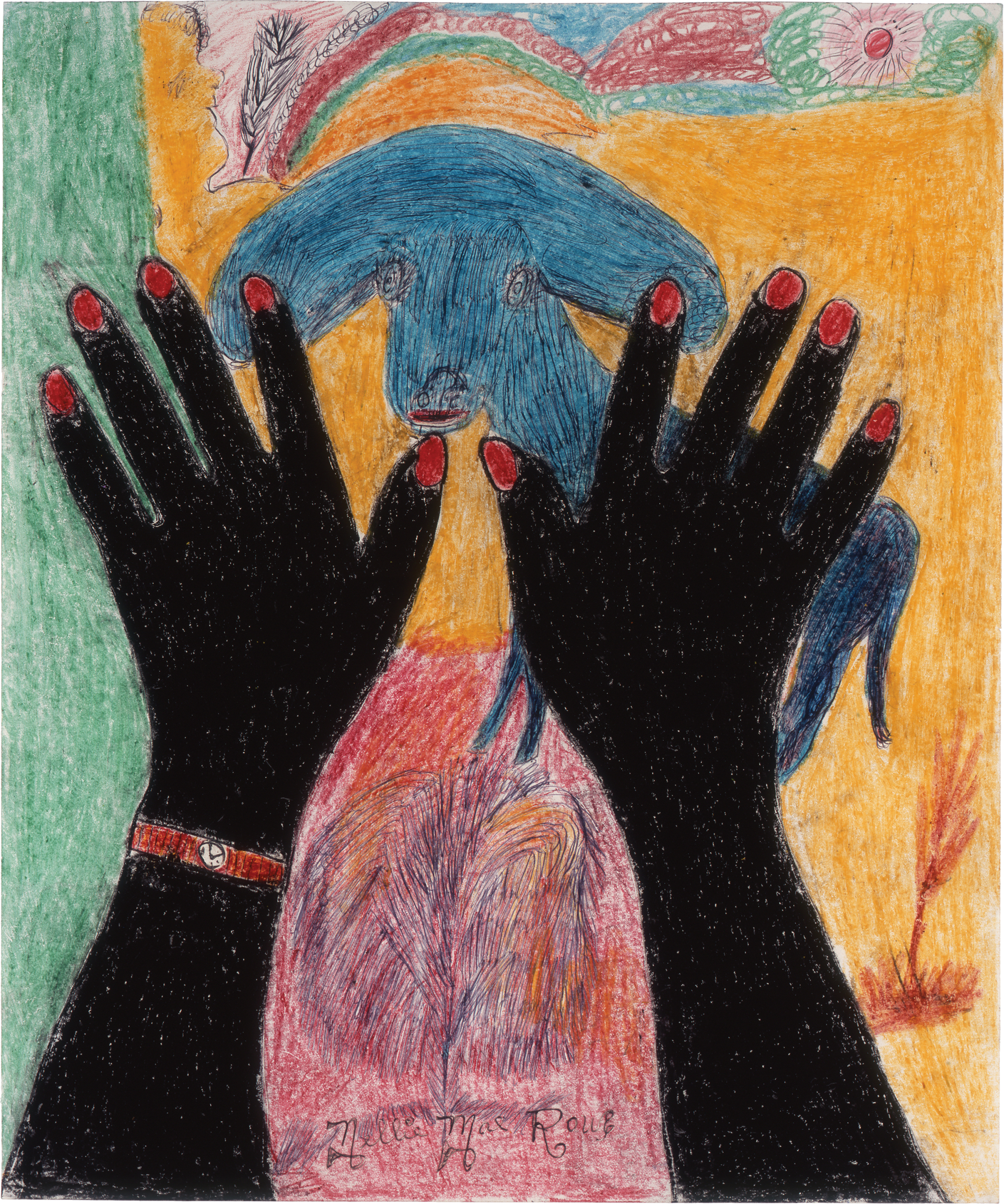
“The pictures I am proud of that I have made are of my hand. I leave my hand on the wall. When I’m gone they can see a print of my hand. I love that—to see a print of my hand. I’ll be gone to rest but they can look back and say ‘that is Nellie Mae’s hand.’”
Untitled (Peace)
Nellie Mae Rowe, American, 1900–1982
1978–1982
Crayon and pen on paper
17 x 14 inches
Gift of Judith Alexander
2003.219

